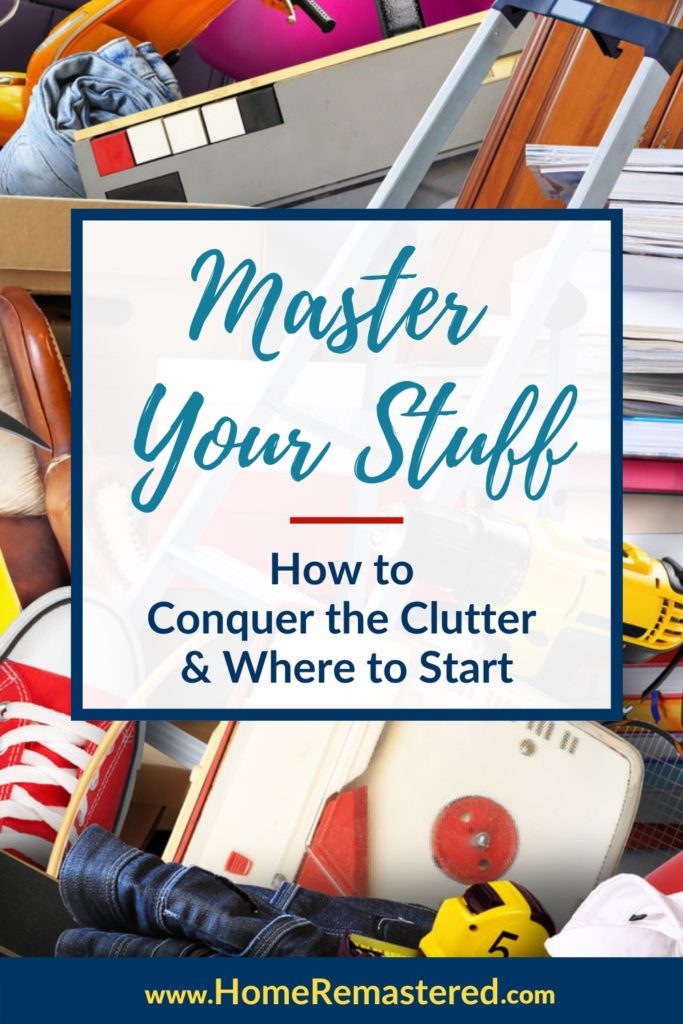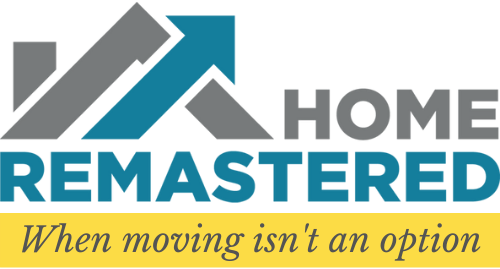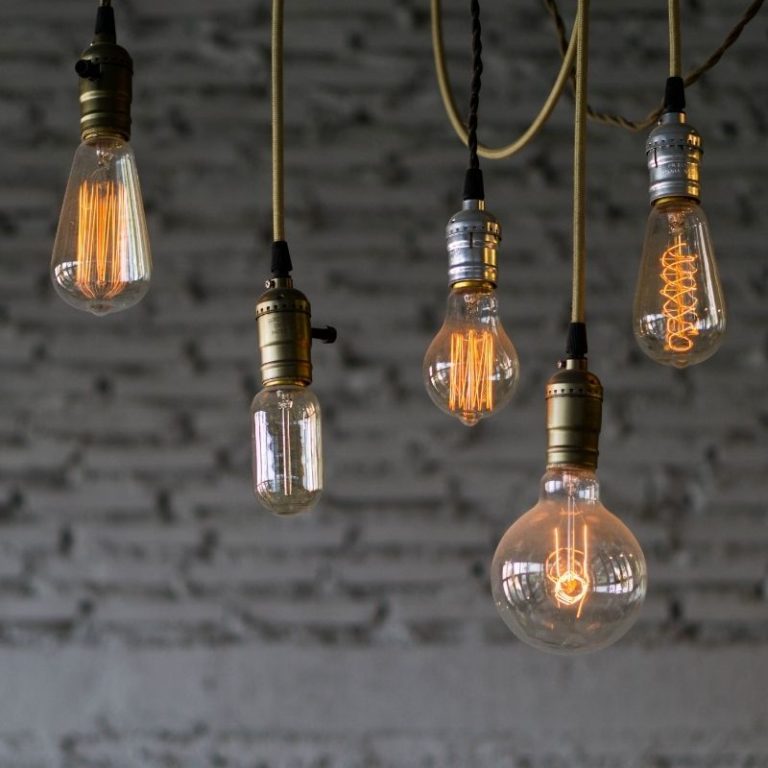Master Your Stuff: How to Conquer the Clutter & Where to Start

Help! My house bursting at the seams with stuff. I need to do something about it, but I don’t know where to start decluttering! Sound familiar? Take a deep breath. I’ll show you exactly where to start decluttering and organizing your home.
Do you have a stuff problem? Have you ever thought about trying one of those declutter challenges, only to feel defeated before you even finish reading about Day 2?
Timed declutter challenges, while motivational, are pretty unrealistic for most people. There’s no room for emergency work calls, last minute appointments, kids’ activities, sickness, spontaneity, sleep, or life. Decluttering usually requires us to make a giant mess in Phase 1. If you run out of time before getting to Phase 2, then you could have a MUCH bigger problem to deal with.
Here’s the thing: even if you are able to accomplish this miracle declutter, if you don’t get organized and change how your home actually functions, this will be a very short term solution. It’s like yo-yo dieting. There is no quick fix. You need to put in the work and change your habits. I’m not gonna lie, it might take a while. But that’s ok! Take one project at a time and celebrate the small victories. The hardest part is knowing where to start.
Where do I start decluttering?
Start with a plan. A good plan will show you exactly where to focus first. The appeal of a declutter challenge is that it tells you where to start. But not everyone has the same stuff-related issues. Instead of going with a one-size-fits-a-few plan, I suggest you make your own. Not only will this make your work more efficient, but it will also allow you to tailor it very specifically to your lifestyle. With a plan, you’ll know EXACTLY where to start decluttering. The length of your plan depends on you. Finish it in 3 days, 3 weeks, 3 months, or even 3 years. In the long run, a tailored 300-day declutter plan is MUCH more effective than 10 failed 30-day challenges!
Create Your Plan
This is not just about throwing away or donating items you no longer need. It’s about getting everything in the right place and making it easier to keep it there. A plan to master your stuff will force you to think about everything at once and eliminate redundant efforts. No more organizing all of your craft supplies in one room only to realize three months later that they would be better elsewhere!
STEP 1: DOWNLOAD THE MASTER YOUR STUFF WORKSHEET
COMING SOON!! To eliminate all of your excuses, I’m creating this in multiple formats: PDF, Excel, Numbers and Google Sheets. You can download one or all of them. Just do what works for you. The value of the spreadsheet versions is that your calculations will all be done for you.
Wait, what? I have to do math?!?!? Don’t worry. It’s just simple addition and subtraction. I have created a formula that will tell you EXACTLY where to start decluttering in order to make journey as efficient as possible.
STEP 2: INVENTORY YOUR SPACES
Make a list of every room, closet, or random storage space in your house. Don’t leave anything out! Do you have an awkward space on your basement stairs? Even if you’ve never put anything there before, include it on the list!
STEP 3: INVENTORY YOUR STUFF
Next, go into each of those rooms, closets, and random storage spaces and make a list of stuff that doesn’t belong there.
Categorize the items if necessary. If all of the books in one room will go to the same place, just write “books”. But if different type of books will go to different places, then create a separate line item for each.
Don’t include any items that you intend to purge completely from your home or items that already have a dedicated spot in another room and just need to be put away.
For example, let’s say your dining room table is covered with:
- a pile of mail that you would love to relocate if you could find a good spot for it. Put that on the list.
- a stack of used school notebooks destined for the recycle bin. Don’t put that on the list.
- a sweatshirt left behind by your son who *swears* he’ll put away the next time he goes upstairs. Leave that off the list.
STEP 4: MATCH YOUR STUFF TO YOUR SPACES
Compare your two lists. Look at every item on your stuff list and try to figure out where it will go. Don’t worry if a space needs to be organized before receiving the item. Right now you are just concerned about where things belong in a perfect world.
Give the room/space a “-1” for every item leaving, and a “+1” for every item that will eventually come in. If you don’t know where something will go, but you are 100% sure that it doesn’t belong in its current location, just give that space a “-1” and don’t worry about assigning the “+1” space. Good landing spots may start to reveal themselves as you progress through your plan.
STEP 5: DETERMINE YOUR STARTING POINT
Ah, now we’re getting to the good stuff. Here’s where the math comes in. Add up the total points for each space (add up the plusses and subtract the minuses). The result is your Net Stuff score. It could be a positive or negative number depending on how much stuff is coming or going.
Now, this may be counter-intuitive, but start in the room/space with the highest Net Stuff score (a.k.a. the room with the most items moving into it). It’s as simple as that!
STEP 6: GET STARTED!
Not knowing where to start is the biggest road block for most people who want to declutter and get organized. You don’t have that excuse anymore! You know EXACTLY where to start! Every room will follow the same basic organization process, which you can see here.
The magic of this system is that it allows you to tackle one room at a time, instead of tearing apart the whole house at once and hoping for the best. By focusing on the room that will be receiving the most items first, you accomplish two things:
- You reduce/eliminate the step of moving items into a room that is not yet ready to receive them. The last thing you want to do is create a bigger mess in each room by tossing more stuff in there before you have a chance to organize it. That makes your work MUCH harder.
- You get a head start on every other room. As you move items into your focus room, your other spaces become a little less cluttered in the process. Now when you start to organize those rooms, there is less stuff to manage!
STEP 7: DECLUTTER, ORGANIZE & REPEAT
When you finish the first room, update your Stuff List by removing the items that have found a permanent home. Now recalculate your Net Stuff score to determine which room to focus on next. Repeat this process until there is a designated place for everything in your home and everything is in its place.
PIN FOR LATER






